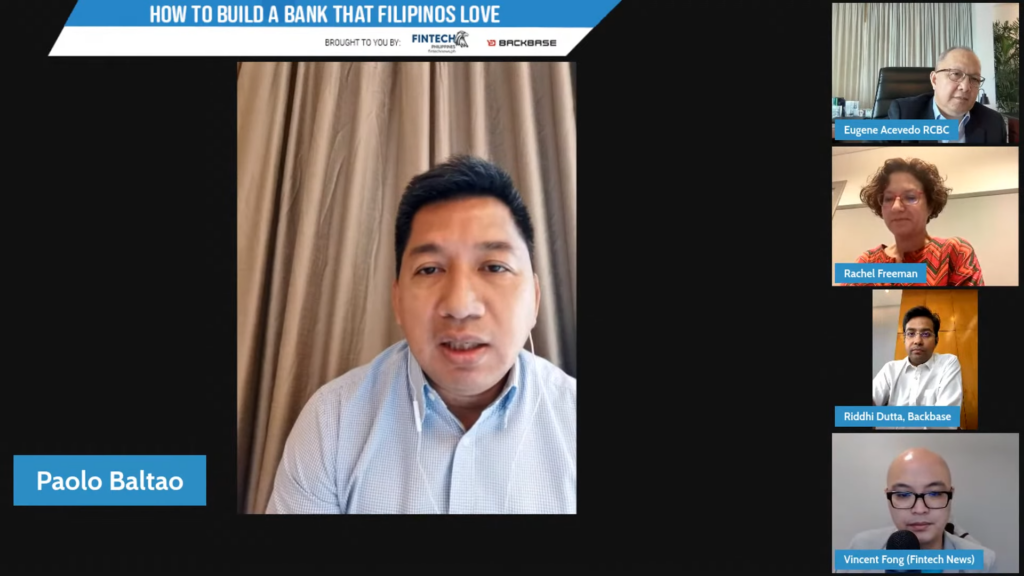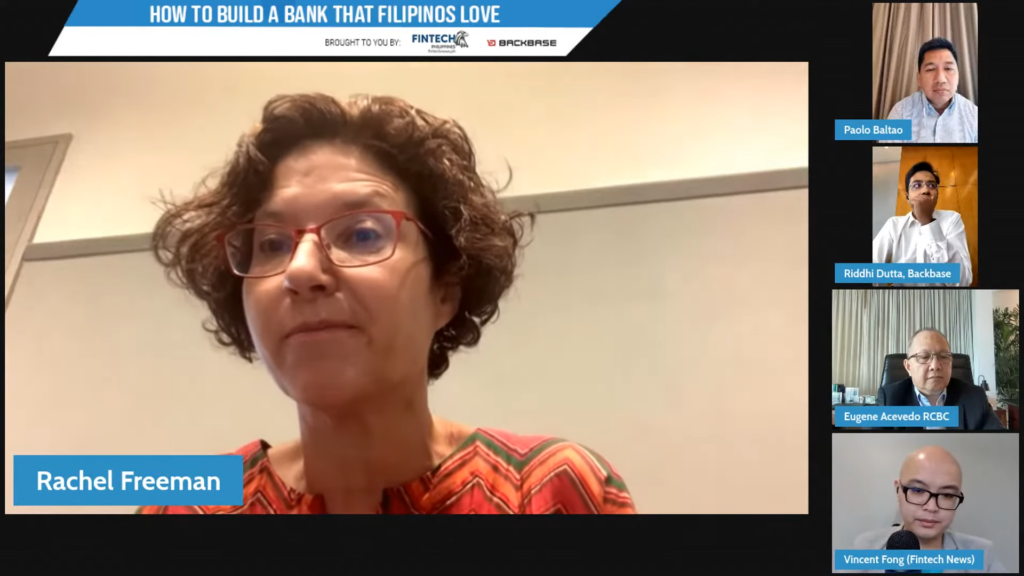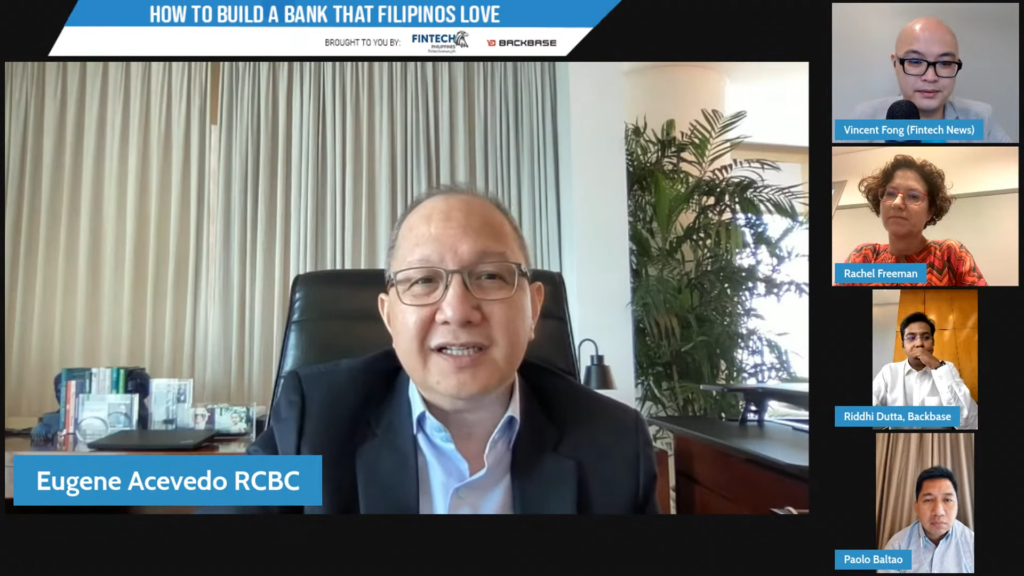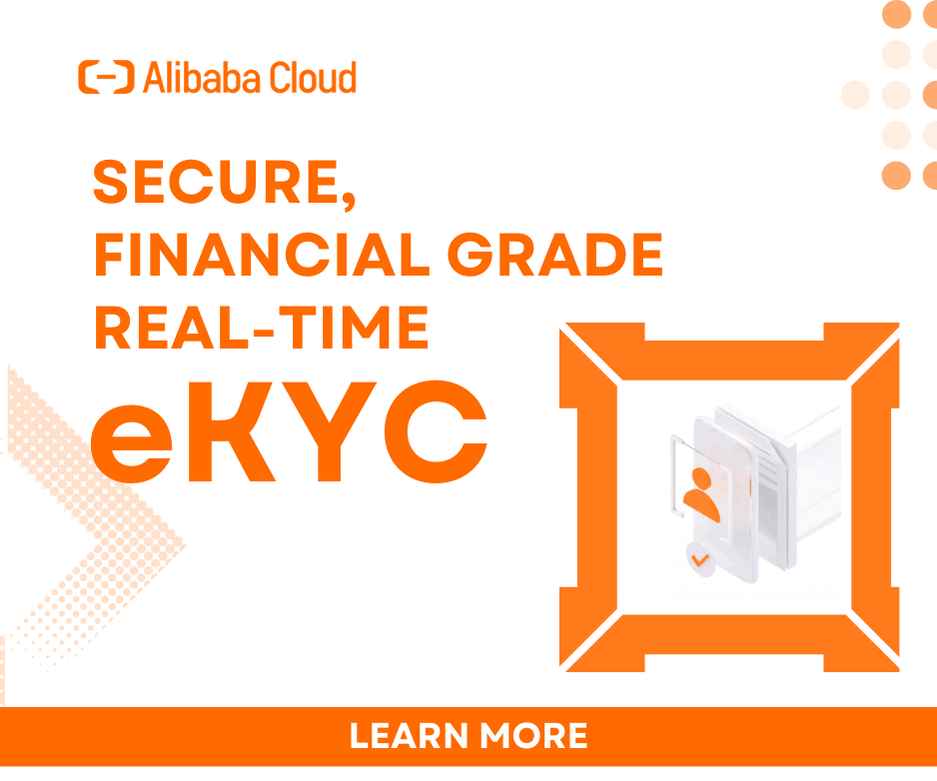
New Challengers Pressure Incumbents to Improve Customer Experiences
by Fintech News Philippines May 30, 2022In the Philippines, the market entry of new, digital-first challenger banks is shaking up the banking industry, forcing incumbents to put an emphasis on improving customer experiences to not only win new customers, but also retain existing ones.
During the latest Fintech Fireside Asia panel discussion, top executives from Rizal Commercial Banking Corporation (RCBC) and Philippine National Bank, two of the country’s largest banks, Tyme, a forthcoming digital challenger bank, and Backbase, a fintech software provider, discussed changing consumer expectations, delving into some of the initiatives each of them has launched to differentiate from competitors and provide superior customer experiences.
In the age of bigtechs, where brands like Amazon, Google and Grab are providing hyper-personalized offerings and seamless omni-channel experiences, it has become clear that real value resides not only in the products and services a company provides but also in the way that they are being delivered to them.
“The tolerance for inefficiency, negligence and absurdity, as far as bankers are concerned, is at an all-time low,” said Paolo Eugenio J. Baltao, SVP and Special Assistant to the President on Digital Bank Initiative, Philippine National Bank.
“When you’re talking about customer satisfaction and experience, you are no longer talking about just providing a good experience or an expected experience. The customer, for you to retain them and for them to continue to patronize you, you should be providing them with an unbelievable customer experience.”

Paolo Eugenio J. Baltao, SVP and Special Assistant to the President on Digital Bank Initiative, Philippine National Bank
Embracing a hybrid approach
A seamless, contextual and personalized customer experience is worth at least as much as a superior product or efficient process, helping build customer loyalty, reduce costs, and boost revenues. And while digital tools and channels are often portrayed as the ultimate solution to attracting and engaging with today’s consumers, digital isn’t a silver bullet that will solve every problem.
Today’s empowered and connected banking customers demand services according to their individual preferences and depending on environmental conditions, said Riddhi Dutta, Regional Head for ASEAN & South Asia, Backbase. Banks should put their focus on providing a superior experience at any given touchpoint, whether that’s through a mobile app, call center or in-person.
“We are not talking about siloed points, applications anymore, which is a mobile app, an online app or a branch, customers are going to engage with you in multiple places,” Riddhi said.
“Just make sure that you are orchestrating all these horizons that cuts across all channels, lines of business, segments of the customer journey, and so on. Don’t worry about the channel, just worry about the context of the customer. That’s where the focus should be.”

Riddhi Dutta, Regional Head for ASEAN & South Asia, Backbase
Digital banking group Tyme is the embodiment of this approach. The company, which launched its first digital banking offering TymeBank in South Africa back in 2019, relies on a so-called “high tech – high touch” strategy, leveraging both online and offline channels to acquire customers and better engage with them.
“We’re digital, which means that in the back end everything is digital,” said Rachel Freeman, Chief Growth Officer, Tyme. “However, we do think that there is still an element of touch that’s important … Trust is important in banking.”
In addition to a mobile app and digital interfaces, TymeBank also relies on a network of kiosks and ambassadors which are responsible for onboarding customers and performing anti-money laundering (AML)/know-your-customers (KYC) checks. These ambassadors are also tasked with helping new customers get the hang of the TymeBank mobile app, walking them through the features and functionalities.
Kiosks are strategically placed in the various retail stores Tyme has inked partnerships with, a setting that’s propitious to engage with potential banking prospects, Rachel said.
“One of the fundamental parts of Tyme is that we integrate into retail systems and infrastructures,” she said.
“When people go to a store, they’re thinking about a transaction and using money and it involves the whole idea of finance. That’s why we have installed our kiosks inside stores so that people are already in this mindset and because it is a great place to manufacture that [first] interaction.”

Rachel Freeman, Chief Growth Officer, Tyme
This strategy has significantly contributed to the success of TymeBank, allowing it to amass nearly 5 million customers in the span of three years.
“Our experience in South Africa is that only 20% of our almost 5 million customers have onboarded just by downloading the app, while 80% came from the kiosks,” Rachel said.
“Also that 20% only came in through click-throughs and digital advertising which have gotten very expensive. So it’s actually quite low cost for us to use the kiosks.”
In the Philippines, Tyme’s forthcoming GoTyme digital bank will be replicating this approach, leveraging its partnership with the Gokongwei Group and the Robinsons retail stores to build a physical presence.
“[Customers] will be able to walk in and open a full bank account in 5 minutes, and then from the kiosk, [they] will get a personalized debit card. The kiosk will be doing all the AML, KYC and checks,” Rachel explained. “Once they receive the debit card, [they will be able to] walk to the cash register at the Robinsons’ retail store and cash in and cash out right there to activate the card.”
Leveraging data to improve customer experience
Recent advances in data analytics have provided banks with tremendous opportunities to better serve their customers through granular segmentation and personalization.
Eugene S. Acevedo, President and CEO, RCBC, said data science and analytic tools have enabled the bank to identify customer persona, create finely sliced segments and provide customized offerings to each of these particular segments.
But one area the bank is most interested in is the use of advanced data analytics to build credit scoring models, increase accuracy in evaluation, and improve the overall customer experience for loan applications.
“Our current obsession is perfecting our credit scoring in a way that even before a customer comes to us … we are already ready to give him or her that credit facility,” Eugene said.
“Currently in the Philippines, the standard for auto loans is anywhere between four hours to two days. Imagine if we can do it in 30 minutes or 5 minutes. We can do that based on our own data.
“Unfortunately, we don’t have data for everyone, but at least for a significant segment of our customer base, we already have that. [This means that] for any new customer coming in, we can do what my data scientists refer to as ‘lookalike analysis’. We have two million active customers, anybody who walks in might look similar to several of my two million customers and we can score then them.”

Eugene S. Acevedo, President and CEO, RCBC
As a tech vendor, Riddhi noted an increase in the usage of data and analytics among banks. Using insights drawn from customers’ data, banks can predict the exact moment when a customer needs a specific product and push that product at the right moment.
This concept, also referred to as contextual banking, makes use of current and historical data to provide banks with an overarching view of who their customers are and where they are in their customer journey. This subsequently allows banks to offer the personalized, ongoing, omni-channel, and seamless experiences that today’s consumers are demanding.
“For example, if an SME customer is going to [have a negative balance] in the next three months, can I offer a line of credit to this customer? That’s contextual credit: giving credit to the customer at that specific period of time because you know that he or she will need that credit,” Riddhi explained. “Similarly, if … a customer is about to hit their budgets at the 5th of the month, they may need an overdraft or personal loan [soon].
“[When you are talking about customer experience and engagement,] you are talking about the customer context and experience across the entire lifecycle, and that’s where the data comes in and how you should use that data.”








